Posts Tagged ‘public relations case study’
- Mar
- 6
Posted on March 6, 2012 by Joel Williams
The potential productivity gains offered by automatic taping and finishing tools from Ames Taping Tools are highlighted in the March cover story of Walls & Ceilings Magazine, which profile an often overlooked means of greater efficiencies – and profits – that can be found in the maintenance of the tools themselves.
The gold standard for any finisher is a clean, fully calibrated tool. These job-ready tools maximize the contractor’s time actively finishing—and can boost productivity by up to 15 percent. Using an average hourly labor rate of $47, this enhanced performance translates into $282 extra per worker, per week. For a crew of three, top-quality tools can help generate an additional $44,000 in billings annually.
Given this sobering economic reality, how does a contractor decide whether to own or rent his automatic tools? What productivity measures does he use to guide his choice?
Well, that depends. Owning a set of taping tools is ideal for a contractor who properly maintains his investment through routine cleaning, lubricating and replacement of standard wear parts. But for his equally conscientious counterpart who must share tools across a jobsite, a rental arrangement assures that no matter who last ran a particular tool, it can be changed out, at no cost, for a clean and fully-calibrated tool.
Unfortunately, the real productivity thief is found in between these two scenarios. The contractor who purchases tools—with the best intentions—but, due to work load or compressed schedules, cannot properly maintain them is forced to make due. He must compensate for a poorly performing or broken tool by working additional hours or overstaffing a job.
In the end, tool ownership—just like the chosen finishing method—is the responsibility of each individual contractor.
Larger operations typically leverage the efficiencies and services associated with rental agreements, while many individual contractors prefer the familiarity of their own tools.
Click here to learn more.
- Nov
- 10
Posted on November 10, 2011 by Nora DePalma
Once we had a solid case study that chronicled Loews Hotels and Resorts’ success using the American Standard Champion 4 toilet to solve the maintenance nightmare of 350 overflowing toilets each month, the pitch came together through serendipity, social media and the inimitable Peter Shankman.
As we were targeting and researching journalists who might find this story beneficial to their readers, we signed up for a Peter Shankman webinar featuring Barbara DeLollis of USA Today Hotel Check-In and the totally hilarious David Moye, pop culture reporter for HuffPost Weird News (former AOL Weird News).
As the Shankman seminar was underway, O’Reilly/DePalma colleagues Joel Williams and Nora DePalma texted between Chicago and Atlanta:
DePalma: Loews case study?
Williams: Yup, on it.
Williams read some of DeLollis’ columns and emailed a succinct and engaging pitch:
“Being naïve to all things hotels, I’d think top hotel chains would be focused on spacious, well appointed rooms, Egyptian cotton sheets and such – not a toilet. Loews and Hyatt, however, think the flush is more powerful than the fluff.”
Three days later, DeLollis featured our client in her USA Today Hotel Check-In column. DePalma followed up with some tweet love:

Which led to further mentions:
The Economist Business Travel Blog 2/11/2011
AOL Weird News 2/18/2011
Bayou Renaissance Man Blog 2/20/2011
Discovery Channel Online 2/25/2011
MSNBC 2/25/2011
eHotelier Global Hospitality News 2/21/2011
PM Plumbing & Mechanical 7/1/2011
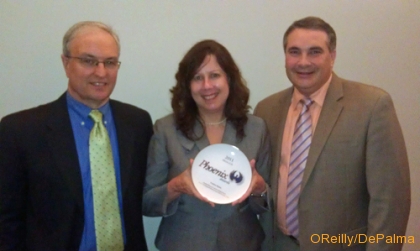
John O’Reilly, Nora DePalma, Joel Williams
On Thursday, November 3, one of the largest Public Relations Society chapters in the US, PRSA GA, awarded O’Reilly/DePalma and American Standard Brands a Phoenix Award in Feature Writing for this public relations case history about case histories.
To find out how we can tell great stories about your products, email John or Nora.
<<What is a Case Study Part 1
<<What is a Case Study Part 2
- Nov
- 9
Posted on November 9, 2011 by Nora DePalma
Question: What is a case study and how can a story about the bathrooms at Loews Hotels garner 40 million impressions for a public relations’ client’s key messages?
Answer: It’s more than a case study or a customer testimonial. It’s a good story. One that a journalist recognizes as a good story. Which is defined as a story that people want to read.
A good story starts with asking the right questions of the right people. In the case of Loews, uncovering the story that Champion 4 toilet from American Standard reduced maintenance calls from overflowing toilets by 80% at their hotels and resorts took dogged pursuit of story leads, led by O’Reilly/DePalma account director Joel Williams.
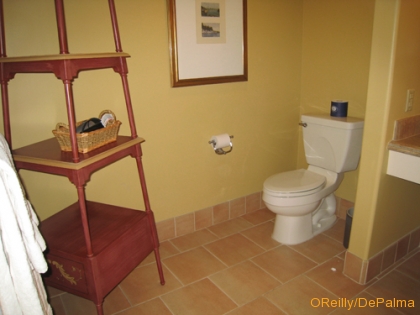
Service calls plunged at the Loews Portofino resort after installing the Champion 4 toilet
It started with a story lead, from the savvy American Standard sales executives who introduced Joel to three facilities managers associated with Loews. “I know what type of details editors are going to want to cover this story, so it’s my job to get the full scoop as efficiently as possible,” Williams said.
The glory is in the details, which means finding the best sources to tell your story. Calling sources and following leads brought Williams to Tony Rodrigues, Regional Director of Engineering for Loews Hotels at Universal Orlando.
Rodrigues was dealing with nearly 120 service calls each month that required a toilet plunger. As chief engineer overseeing three of Loews’ properties on-site at Universal Orlando Resort, multiply this plunger exercise by three and you can see where Rodrigues was ready to blow his lid (sorry).
Williams scored the money quote from Tony Rodrigues, after he put the American Standard Champion 4 to the test:
Maintenance calls at the Loews Portofino Bay property plunged more than 80 percent after replacing 750 Kohler® brand toilets with the American Standard Champion® 4 toilet.
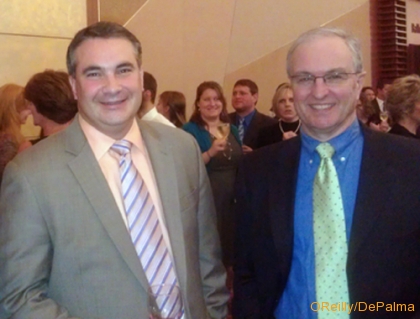
Seasoned brand journalists, Joel Williams and John O’Reilly
As you can see from Williams’s bio on our site, he didn’t just fall off the turnip truck when it comes to understanding building systems. He’s not a writer you can find for $23/hr. It takes knowledge and experience to gain credibility among building specifiers and installers.
And top tier journalists.
<< What is a Case Study Part 1 of 3
Next: What is a Case Study Part 3 of 3, a.k.a. Journalists Are People, Too >>
- Nov
- 8
Posted on November 8, 2011 by Nora DePalma
What is a case study? At its heart, a case study or a testimonial sample is an incredibly well-told story that compels people who experience it to buy into its value proposition.
“Great work. This is exactly the type of PR that makes a difference.”
-Chief Marketing Officer, American Standard Brands
Ten years into our relationship with American Standard Brands, O’Reilly/DePalma enjoyed such feedback after USA Today and The Economist travel blogs, as well as AOL News and others ran stories about how the Loews hotel chain saw maintenance calls for clogged toilets plunge 80% after the Champion 4 toilet was installed.
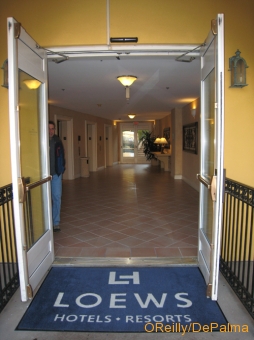
It all hinged on the money quote we sourced through solid brand journalism:
Maintenance calls at the Loews Portofino Bay property plunged more than 80 percent after replacing 750 Kohler® brand toilets with the American Standard Champion® 4 toilet.
We sent our findings around to influencers seeking trends in the hospitality industry and garnered fantastic coverage for American Standard and the Champion 4 toilet:
“‘Think about the embarrassment and inconvenience of a toilet clog,’ Dick Senechal, Loews’ senior vice president of facilities, who calls American Standard’s Champion 4 toilet an industry breakthrough, told me. ‘Eliminating that is a great service for our guests.’” — From Barbara DeLollis of USA Today Hotel Check-In.
“The chain has decided that enough is enough and is to upgrade the toilets across its properties. And we’re not talking any old loo. We’re talking American Standard’s Champion 4.” — From Gulliver, The Economist
“According to James Walsh, American Standard’s vice president and general manager of consumer fixtures, the Champion 4 proves that not all low-flow toilets do a crappy job. ‘The first generation of low-flow toilets had such poor performance that they left many people under the impression they weren’t, pardon the expression, worth a ‘crap,” said Walsh, whose knowledge of the inner workings of toilets has led some of his co-workers to call him ‘Professor Toilet.’” – From David Moye, AOL News
To date, this case study has garnered more than 40 million impressions and is a 2011 PRSA GA Phoenix Award winner for Feature Stories.
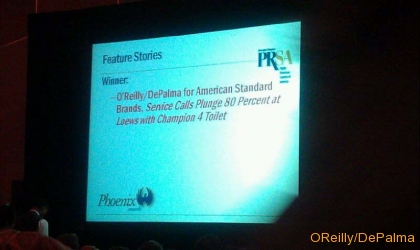
How do big-time “top-tier” media placements like this happen? Three not-so-simple steps:
1. Create a good quality product that solves a real problem. Your product has to do what it says it will do. Otherwise, the Internet will find you out and destroy you. Be authentic.
2. Hire people who know how to find and tell a compelling story so that prospects absorb your message. If you have never fast-forwarded through a TV ad or clicked impatiently through a marketing message to get to the story you want to read, we permit you to believe that you can still force-feed marketing messages.
3. Do your homework to identify the best media outlet and the best journalist to tell your story to a larger audience. Tailor the pitch, keep it channel-exclusive and follow up patiently and appropriately. Think about helping someone else (the journalist) instead of pushing them.
How do you find and tell a good story? It starts by asking the right questions of the right people. In the building products industry, that requires someone with the subject-matter expertise and journalistic tact to engage homeowners, developers, builders, architects, facilities managers, designers, contractors, specifiers and designers. (Remember, people: Don’t try this with a generalist PR agency junior account executive.)
Next: What is a Case Study Part 2








